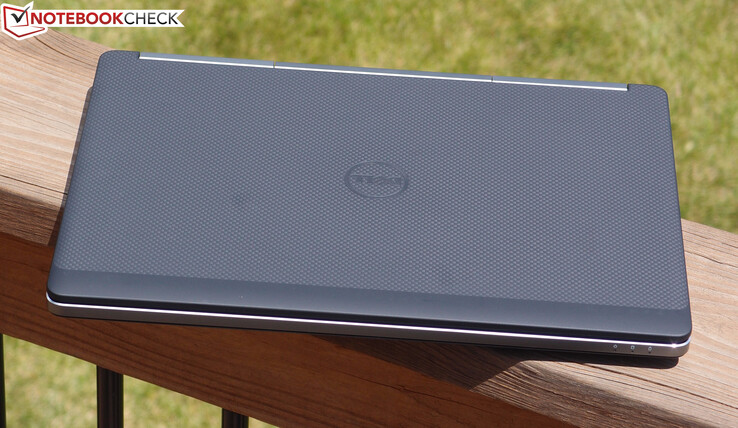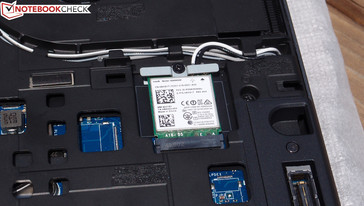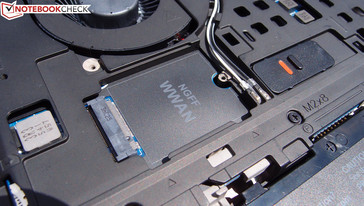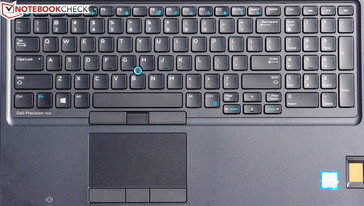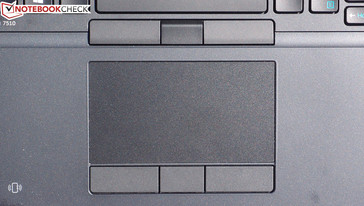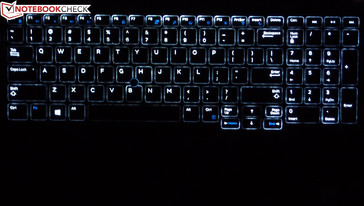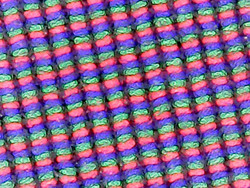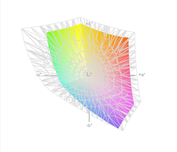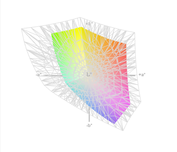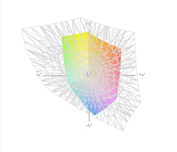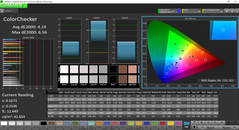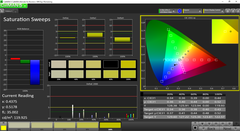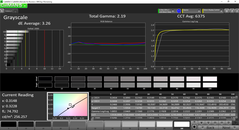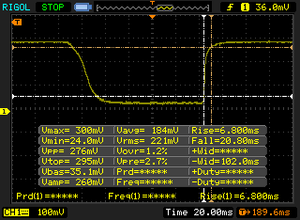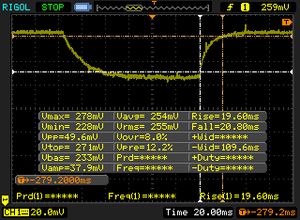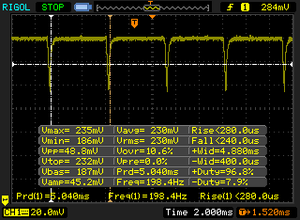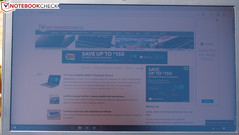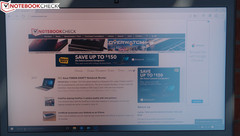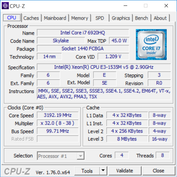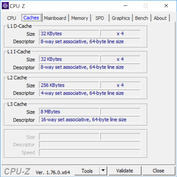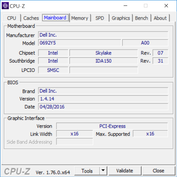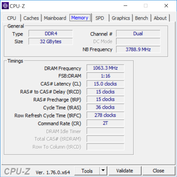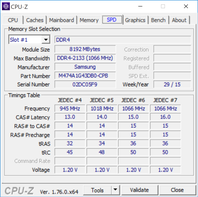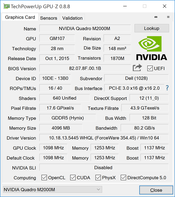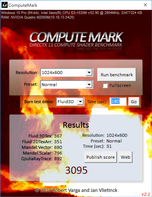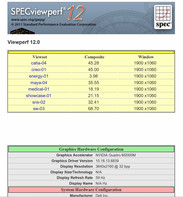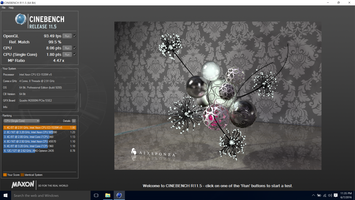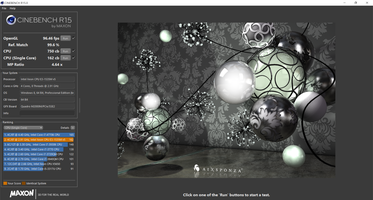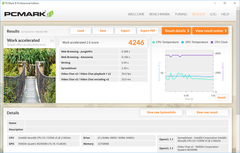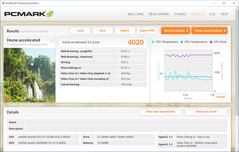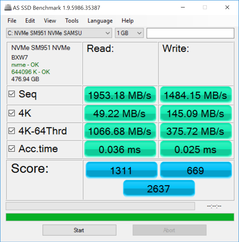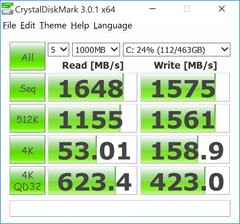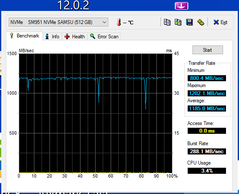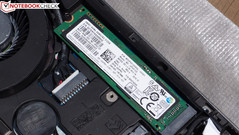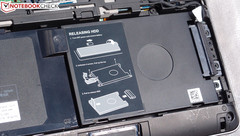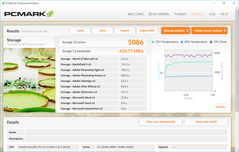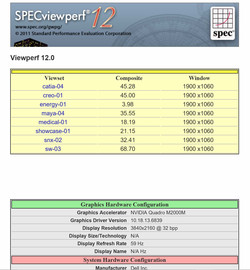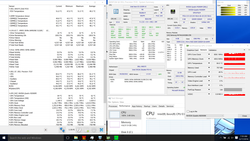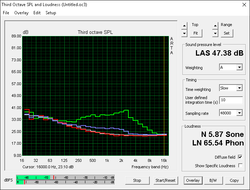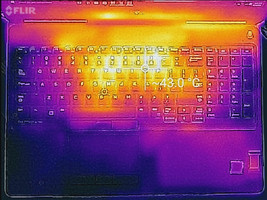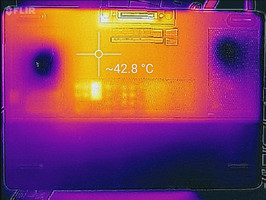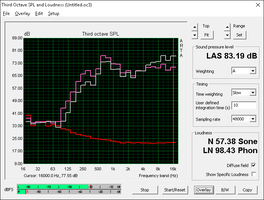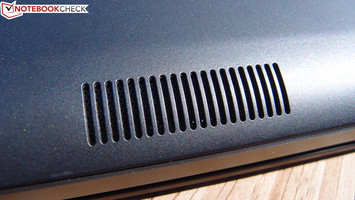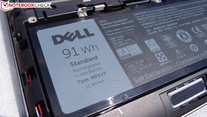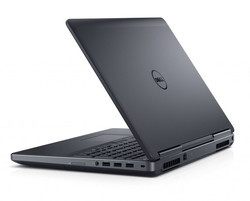Dell Precision 7510 (4K IGZO) Mobile Workstation Review

Dell’s Precision mobile workstations are the company’s no-compromises workhorses in the business segment. In contrast to the Latitudes—which adopt a more balanced portfolio of specifications aimed at satisfying business professionals but still maintaining a manageable weight and overall value—the Precision line pulls out the stops. These machines offer maximum performance components across the board, heavy-duty cooling systems, and color-accurate display panels. They are made to work—hard.
By the same token, they’re also subject to the same design-oriented inertia which applies to most other successful business notebooks; that is, Dell is relatively slow to change the Precision layouts, and they’re careful not to fix what isn’t broken. Because of that, the new Precision 7000 series features the first major design change we’ve seen in around 5 years (if you don’t count the smaller and lower-powered Precision 5510 we evaluated back in December). The model we’re reviewing today, the Precision 7510, would be considered the direct successor to 2013’s 15.6-inch M4800. Unlike the 5510, the 7510 is less about portability, balance, and requisite compromise and more about unencumbered performance—the classic workstation. As always, myriad configuration options exist, ranging from relatively affordable packages just above the $1,100 mark all the way up to notebooks costing several thousands of dollars.
Coming in at $3,267 (MSRP $4,667), our particular configuration isn’t cheap, but the components reveal why: sporting an Intel Xeon E3-1535M v5 CPU, NVIDIA Quadro M2000M GPU, 32 GB DDR4 RAM, a 512 GB Samsung NVMe SSD, and a 4K display, there isn’t much to leave us wanting—on paper, anyway. Can the Precision 7510 live up to the promise of its lofty specifications in real-world abuse? Our unprecedented array of in-depth benchmarks and tests awaits you.
Case
As we touched on above, the Precision 7000 series hails the first major case redesign for the series in roughly five years. The result is a lighter, thinner profile with a more contemporary design—but without sacrificing most of the conveniences and functionality of previous models. Weighing in at 2.74 kg and sporting measurements only slightly smaller than that of its M4800 predecessor (thinner, yet with an ever-so-slightly larger footprint), it’s hardly the sleek, portable wonder that the Precision 5510 represents. But the roughly six pound total weight does come as a pleasant surprise in comparison to the M4800 (which was closer to seven pounds). Much of this is achieved through the omission of the optical drive and the use of lighter-weight (yet still strong) casing materials such as magnesium and carbon fiber throughout. The metal lid of the M4800, for instance, has evolved into a carbon fiber iteration on the 7510, more closely resembling the palmrest (both in terms of aesthetics and haptics) of the Dell XPS 13 than the texture of the previous Precision installments.
The overall appearance is actually sort of a mishmash between the previous two generations of Dell Latitude laptops (E7x50 and E7x40, specifically—not the latest E7x70 series). The keyboard and button styling has been lifted from the E7x50 series, whereas the palmrest and perimeter hail directly from the E7x40, complete with soft-touch rubbery finish over thin magnesium, which is exposed around the actual edges of the machine. One nitpick about this case design is that it is decidedly less comfortable on wrists resting on the machine’s edges, but since the 7510 is a larger machine than any of the Latitudes its styling imitates, the palm rest is also in turn larger, thereby mitigating these concerns.
These changes in materials do not seem to greatly affect the overall stability of the unit, which is superbly solid overall. The base unit rests firmly on a flat surface and yields nothing under pressure in any region; the oversized rubber feet keep it stationary. There is absolutely no flex across the keyboard or touchpad under moderate pressure. Meanwhile, although the display lid effectively resists pressure from behind, torsion resistance is the only area which may have been notably afflicted by the jump to carbon fiber—but the performance in this area is still above average for a larger screen. The two large hinges do a fine job of maintaining the angle of the screen without allowing any annoying bounce during operation.
Compared to other notebooks of its class, the Precision 7510 is ever-so-slightly heavier and comparable in terms of overall size (the Lenovo ThinkPad P50 is only slightly smaller than both the Precision 7510 and the HP ZBook 15 G3).
Connectivity
Although the port selection has been pared down from previous Precision models (read: modernized), the staples have been preserved, and a healthy four USB 3.0 ports line the left and right sides of the unit. The only mentionable loss for most people will be the VGA port, which (as is so often the case nowadays) has been squeezed out, leaving only HDMI and mini-DisplayPort in its place (adapters are inexpensive and abundantly available anyway). Of course, users always have the docking station port at their disposal (located on the bottom of the machine), which is still the same port from many years back—and is thus compatible with all of the same docks most business users already own.
Conspicuously missing is USB 3.1 Gen 2 or Type-C, though it’s not a major issue. Our review unit also lacks a Thunderbolt port, but this can be optionally added during the build for just $29 more (along with a Smart Card port).
Communication
The ubiquitous Intel Dual Band Wireless-AC 8260 drives wireless network connectivity for the Precision 7510, and it does so with appropriate proficiency. We encountered no problems in terms of connectivity, signal strength, or speed during our review period; when connected to our ASUS RT-AC68P, the notebook generally performed as well or better than most others nearby. The Intel 8260 adapter also includes Bluetooth 4.1 functionality.
A Gigabit Ethernet port can be found on the back side of the machine. Internally, an empty slot for the addition of a WWAN card is easily accessible (as detailed above) beneath the bottom panel of the machine, with the required cables preinstalled and waiting to be connected. The SIM slot is also located here, which would make swapping cards somewhat inconvenient.
The webcam is nothing special—it carries a 720p resolution and features middling video quality, with average noise levels and relatively weak low light performance.
Accessories
The 7510 ships with a large 180W power adapter weighing 778 grams.
Software
It’s worth mentioning that we experienced some occasional strange behavior resuming from sleep on the Precision 7510. This behavior persisted even after all device drivers, as well as the BIOS, were updated to their latest versions. No problematic entries were present in Device Manager, and the Event Log did not provide useful information as to what might be the root cause. It’s possible that a complete reinstallation of the Intel Management Interface and Intel Dynamic Platform and Thermal Framework driver packages may have corrected the problem (as it does on some systems), but since it didn’t affect performance, we never made it that far into troubleshooting.
Maintenance
Maintenance is a breeze, with the battery cover held tight by a single latch on the bottom of the PC, after which the battery and two screws securing the main bottom cover can be removed. This provides access to nearly all replaceable components; you’ll find the M.2/NVMe SSD, a 2.5” drive bay (with preinstalled empty drive carriage in our model), a WWAN port, the WLAN adapter, CMOS battery, replaceable charging port, and two of the four RAM slots. The other two RAM slots are available just beneath the keyboard (another 5 to 10 minutes of careful disassembly), and finally, the heatsinks/fans can be replaced after the palm rest is removed.
Warranty
The Precision 7510 ships with 3 years of on-site warranty service after remote diagnosis. The usual warranty upgrades are available to longer coverage periods as well as ProSupport.
Input Devices
Keyboard
Dell’s Latitude and Precision keyboards have long been celebrated as some of the best in the industry, mentionable in the same breath as the hallowed ThinkPad keyboards. Newer iterations, while now Chiclet-style across the board, largely preserve those same qualities responsible for that reputation, and for the most part, the Dell Precision 7510 keyboard is included. It’s nearly the same model we find in the Latitude E7450, except with a wider profile to accommodate the number pad on the right side. And it feels almost the same, but not exactly: a medium-length stroke, good feedback, relatively quiet operation, and fairly low actuation force render it a comfortable peripheral overall, though we did find it perhaps slightly less comfortable in terms of tuning and feedback than a directly side-by-side E7450. This may actually be due to differences in parts manufacturers, though, so it’s likely a moot point (in other words, one may be subject to the “peripheral lottery” when purchasing the machine). Regardless, even the keyboard in our test unit remains one of the best we have recently evaluated in a notebook.
The keyboard features two levels of backlighting in addition to off—once again, just like the Latitude E7x50 series. Replacement is still relatively easy in spite of the addition of several screws and a rather finicky keyboard trim between the keys; the cables run directly through the center of the laptop and emerge beneath the battery, where they connect to the board. This design was popularized by the E7440 a few years back.
Touchpad
The Alps touchpad is also nearly identical to the one we find in the Latitude E7450. It is precise in its interpretation and comfortable to use, and it picks up on gestures rather quickly and accurately as well. The two separate touchpad buttons found below the touchpad are accompanied by another set above it for use with the TrackPoint, which has seen little if any change for many years now and will be comfortable to those partial to it.
Display
The Dell Precision 7150 features a wide array of 15.6-inch display options (four, to be exact), ranging from a low-end, 1920x1080 standard LED TN panel with an advertised 45% color gamut all the way up to a 3840x2160 (4K) IGZO IPS Anti-Glare display (282 pixels per inch). Our review unit came with the latter, and it truly is a stunning picture. Saturation, color reproduction, and contrast appear to be very good.
| |||||||||||||||||||||||||
Brightness Distribution: 83 %
Center on Battery: 279.2 cd/m²
Contrast: 1050:1 (Black: 0.266 cd/m²)
ΔE ColorChecker Calman: 4.14 | ∀{0.5-29.43 Ø4.79}
ΔE Greyscale Calman: 3.26 | ∀{0.09-98 Ø5}
99.72% sRGB (Argyll 1.6.3 3D)
85.68% AdobeRGB 1998 (Argyll 1.6.3 3D)
99% AdobeRGB 1998 (Argyll 3D)
99.7% sRGB (Argyll 3D)
86.2% Display P3 (Argyll 3D)
Gamma: 2.19
CCT: 6375 K
| Dell Precision 7510 (4K IGZO) 15.6", 3840x2160 | HP ZBook 15 G3 15.6", 1920x1080 | MSI WS60-6QJE316H11 15.6", 3840x2160 | Lenovo ThinkPad P50s-20FKS00400 15.5", 2880x1620 | Lenovo ThinkPad P50 15.6", 1920x1080 | Dell Precision 5510 15.6", 3840x2160 | |
|---|---|---|---|---|---|---|
| Display | -19% | -32% | -25% | -52% | 1% | |
| Display P3 Coverage (%) | 86.2 | 66.8 -23% | 55.1 -36% | 63.7 -26% | 39.13 -55% | 88.4 3% |
| sRGB Coverage (%) | 99.7 | 95.5 -4% | 83 -17% | 87.6 -12% | 58.5 -41% | 100 0% |
| AdobeRGB 1998 Coverage (%) | 99 | 69 -30% | 56.9 -43% | 63.8 -36% | 40.45 -59% | 99.5 1% |
| Response Times | -32% | 15% | 1% | -4% | -32% | |
| Response Time Grey 50% / Grey 80% * (ms) | 40.4 ? | 54 ? -34% | 34 ? 16% | 38 ? 6% | 46 ? -14% | 56.4 ? -40% |
| Response Time Black / White * (ms) | 27.6 ? | 35.6 ? -29% | 24 ? 13% | 28.8 ? -4% | 26 ? 6% | 34 ? -23% |
| PWM Frequency (Hz) | 198.4 ? | 198 ? | 1316 ? | 219 ? | ||
| Screen | -26% | -19% | -16% | -15% | -1% | |
| Brightness middle (cd/m²) | 279.2 | 306 10% | 237 -15% | 319 14% | 263 -6% | 391 40% |
| Brightness (cd/m²) | 271 | 289 7% | 208 -23% | 290 7% | 236 -13% | 361 33% |
| Brightness Distribution (%) | 83 | 85 2% | 77 -7% | 82 -1% | 78 -6% | 87 5% |
| Black Level * (cd/m²) | 0.266 | 0.34 -28% | 0.26 2% | 0.31 -17% | 0.34 -28% | 0.4 -50% |
| Contrast (:1) | 1050 | 900 -14% | 912 -13% | 1029 -2% | 774 -26% | 978 -7% |
| Colorchecker dE 2000 * | 4.14 | 5.1 -23% | 4.42 -7% | 4.8 -16% | 2.35 43% | 4.85 -17% |
| Colorchecker dE 2000 max. * | 6.56 | 9.9 -51% | 8.54 -30% | 7.8 -19% | ||
| Greyscale dE 2000 * | 3.26 | 7.4 -127% | 4.43 -36% | 5.7 -75% | 3.33 -2% | 4.01 -23% |
| Gamma | 2.19 100% | 2.37 93% | 2.23 99% | 2.07 106% | 2.38 92% | 2.18 101% |
| CCT | 6375 102% | 7263 89% | 6133 106% | 6260 104% | 6917 94% | 7340 89% |
| Color Space (Percent of AdobeRGB 1998) (%) | 85.68 | 63 -26% | 52.5 -39% | 56.9 -34% | 37 -57% | 96 12% |
| Color Space (Percent of sRGB) (%) | 99.72 | 95 -5% | 82.9 -17% | 87.4 -12% | 58 -42% | 100 0% |
| Total Average (Program / Settings) | -26% /
-25% | -12% /
-17% | -13% /
-15% | -24% /
-21% | -11% /
-5% |
* ... smaller is better
We measured an average brightness of 271 cd/m², which is a bit below average. The brightness distribution of 83% ensures a relatively consistent luminosity across the breadth of the panel, though it could be better. Contrast, meanwhile, is an excellent 1050:1, driven by a low recorded black value of 0.266 cd/m².
Our color measurements reveal coverage of an excellent 99.72% of the sRGB spectrum, though 100% AdobeRGB is not quite achieved—we calculated right around 86% instead, which is still very good, but inferior to the Precision 5510’s 96%. Regardless, the rest of the competition we chose is far behind here, with the ZBook 15 G3 managing the highest AdobeRGB value of 63% and the Lenovo ThinkPad P50 bringing up the rear with just 37% (and only 58% of sRGB to boot). Upgraded screens exist for some of these other manufacturers’ models as well, but as it happens those were not the panels installed in the units we reviewed with comparable specs elsewhere.
CalMAN 5 readings show a mostly well-calibrated panel (we performed no additional calibration as the Precision 7510’s panel is calibrated from the factory). For instance, the Total Gamma reading of 2.19 is nearly ideal (2.2 is the target value), whereas the CCT Average of 6375 is only slightly warmer than the ideal LCD temperature of 6500K. Color accuracy is only slightly less optimal, with a ColorChecker DeltaE2000 average of 4.14 (ideal: 0) and a Greyscale DeltaE2000 of 3.26 (ideal: 0). Overall, for all but the most discerning of graphic design and photo editing users, the Precision 7510 will prove a valuable and thoroughly capable companion.
Display Response Times
| ↔ Response Time Black to White | ||
|---|---|---|
| 27.6 ms ... rise ↗ and fall ↘ combined | ↗ 6.8 ms rise | |
| ↘ 20.8 ms fall | ||
| The screen shows relatively slow response rates in our tests and may be too slow for gamers. In comparison, all tested devices range from 0.1 (minimum) to 240 (maximum) ms. » 69 % of all devices are better. This means that the measured response time is worse than the average of all tested devices (20.3 ms). | ||
| ↔ Response Time 50% Grey to 80% Grey | ||
| 40.4 ms ... rise ↗ and fall ↘ combined | ↗ 19.6 ms rise | |
| ↘ 20.8 ms fall | ||
| The screen shows slow response rates in our tests and will be unsatisfactory for gamers. In comparison, all tested devices range from 0.165 (minimum) to 636 (maximum) ms. » 62 % of all devices are better. This means that the measured response time is worse than the average of all tested devices (31.7 ms). | ||
Screen Flickering / PWM (Pulse-Width Modulation)
| Screen flickering / PWM detected | 198.4 Hz | ≤ 29 % brightness setting | |
The display backlight flickers at 198.4 Hz (worst case, e.g., utilizing PWM) Flickering detected at a brightness setting of 29 % and below. There should be no flickering or PWM above this brightness setting. The frequency of 198.4 Hz is relatively low, so sensitive users will likely notice flickering and experience eyestrain at the stated brightness setting and below. In comparison: 53 % of all tested devices do not use PWM to dim the display. If PWM was detected, an average of 8156 (minimum: 5 - maximum: 343500) Hz was measured. | |||
Outdoors, the screen’s brightness struggles a bit in direct sunlight, though the matte finish on the panel still ekes out a usable image provided it isn’t too overwhelmingly bright. In shaded areas, the machine is perfectly comfortable to use. Viewing angles are excellent as expected for the high-end IGZO panel.
Performance
The Dell Precision 7510 offers no shortage of configuration choices. In terms of performance-related options, there are seven different CPUs, three different GPUs, RAM ranging from 16 GB up to 64 GB (including 32 GB of ECC RAM if you choose a Xeon processor), and over a dozen different storage options (even more if you consider that the machine supports two concurrent storage drives).
Our configuration features an Intel Xeon E3-1535M v5 CPU, an NVIDIA Quadro M2000M dedicated GPU, and 32 GB of Non-ECC RAM. As previously mentioned, the entire build currently lists for around $3,267; for roughly an additional $47, we could have upgraded this RAM to ECC, and for quite a lot more (+$669) the Xeon E3-1575M could have been our CPU. The upgrade to ECC RAM is affordable and would make a lot of sense for parties who plan to heavily stress the CPU and memory, as errors can greatly reduce stability and even lead to crashes, which can be quite disruptive to the workflow in professional applications. However, it’s hard to fathom many situations where the rapidly diminishing returns of such an investment in the CPU would make financial sense. The Intel Iris Pro Graphics P580 that the upgraded CPU will net you can still be had in the model just below it ($621 less expensive), and considering the availability of powerful dedicated graphics in the 7510, it isn’t likely to receive a lot of serious use.
Full CPU performance is basically possible while operating unplugged; all four cores manage 3.4 GHz clock rates, and even though more fluctuation is in play, it does not materially affect overall performance. The same goes for GPU performance; we actually received a score slightly above our previous 3DMark 06 score when we ran it on battery power only (so we updated the score in our database to reflect the new, higher values). Finally, LatencyMon reports higher-than-normal DPC latency on rare occasions, but over the long term the results do not seem to be worth worrying about.
Processor
The Precision 7510 includes lower-end CPU options for budget-minded consumers, starting with the rather ordinary but nevertheless quite capable Intel Core i5-6300HQ. The most powerful option, meanwhile, is the Intel Xeon E3-1575M v5, which will run you (currently) around $1,167 more than the aforementioned Core i5—a hefty premium indeed. Compared with the CPU we received (the Xeon E3-1535M v5), the processing performance of the E3-1575M is not all that different. Those interesting in springing for this option should spend a few moments evaluating the cost differences to determine whether or not it really makes sense for their particular application.
The Intel Xeon E3-1535M v5 is a quad-core CPU specifically designed for workstation notebooks. Carrying a 45 W TDP, it’s based on the Skylake architecture and is manufactured using a 14 nm process with FinFET transistors. The CPU features a base clock rate of 2.9 GHz and can boost its frequencies all the way to 3.8 GHz (single-core), 3.6 GHz (dual-core), and 3.4 GHz (quad-core). The Xeon E3-1535M v5 is most comparable to the standard Intel Core i7-6920HQ (both of which share the same L3 cache and base clock rate), with the biggest differentiating factor being the Xeon’s support for ECC memory.
Thus, the Xeon E3 is among the top mobile CPUs in our entire performance benchmark database, leading most others with excellent results such as a score of 750 in Cinebench R15 multi-CPU and 162 in the single-CPU test. This also eclipses the rest of our entire comparison field, most of which consists of units equipped with either a slightly lower-end mobile Xeon or a standard CPU. Of course, the sole laggard here is the ThinkPad P50s, which places a lot more focus on portability and balance and which thus leverages an Intel Core i5-6500U in lieu of a higher-TDP chip.
| wPrime 2.10 - 1024m (sort by value) | |
| Dell Precision 7510 (4K IGZO) | |
| Dell Precision 5510 | |
| Super Pi Mod 1.5 XS 32M - 32M (sort by value) | |
| Dell Precision 7510 (4K IGZO) | |
| Dell Precision 5510 | |
* ... smaller is better
System Performance
In our general system performance benchmarks, which consist primarily of PCMark 8 tests, the Precision 7510 proves it’s up to the task. The scores of 4020 and 5537 in PCMark 8 Home Accelerated and Creative Accelerated are great and are at or near the top of the pack. Work Accelerated produced a somewhat more modest score of 4246, but there is no doubt that the notebook feels perfectly responsive mostly always.
| PCMark 8 | |
| Home Score Accelerated v2 (sort by value) | |
| Dell Precision 7510 (4K IGZO) | |
| HP ZBook 15 G3 | |
| MSI WS60-6QJE316H11 | |
| Lenovo ThinkPad P50s-20FKS00400 | |
| Lenovo ThinkPad P50 | |
| Dell Precision 5510 | |
| Work Score Accelerated v2 (sort by value) | |
| Dell Precision 7510 (4K IGZO) | |
| HP ZBook 15 G3 | |
| MSI WS60-6QJE316H11 | |
| Lenovo ThinkPad P50s-20FKS00400 | |
| Lenovo ThinkPad P50 | |
| Dell Precision 5510 | |
| Creative Score Accelerated v2 (sort by value) | |
| Dell Precision 7510 (4K IGZO) | |
| HP ZBook 15 G3 | |
| Dell Precision 5510 | |
| PCMark 8 Home Score Accelerated v2 | 4020 points | |
| PCMark 8 Creative Score Accelerated v2 | 5537 points | |
| PCMark 8 Work Score Accelerated v2 | 4246 points | |
Help | ||
Storage Devices
Keeping with the trend of heavy configurability, Dell currently offers fourteen different solid-state drives (some SATA, some M.2/PCIe) and three different mechanical hard drives to choose from when building your Precision 7510. But that’s not all: the system can support both a conventional 2.5-inch SATA drive and an M.2 2280 drive, so users also have the option to configure a secondary storage drive for a dual-drive setup. Finally, it’s possible to specify RAID parameters (RAID 0 or RAID 1) from the factory, which is an added convenience.
Replacing the drives is equally easy thanks to direct access via the bottom maintenance panel, just two screws away. Even though our review unit only included an M.2 drive, the bracket for a 2.5-inch drive was supplied and installed empty to facilitate painless upgrades by the end user.
Our test unit featured a Samsung SM951 NVMe 512 GB, which is an M.2 2280 drive with a sterling reputation. Our benchmarks help to explain why, with a score of 2637 granted by AS SSD (read/write: 1311/669) and sequential read speeds approaching the 2 GB/s mark. 4K performance is also solid with QD1 read/write speeds of 49.22 and 145.09 MB/s, and QD64 speeds of 1066.68 and 375.72.
We should mention that in order to achieve this performance, we did have to jump through a few extra hoops after receiving our machine. Though it’s fairly common knowledge now that proper NVMe performance requires the installation of the Samsung NVMe v1.1 driver, in order to complete the installation on the Precision 7510, the system must first be switched from RAID mode (handled by the Intel Rapid Storage Technology driver) to AHCI, where the Samsung driver can be used. This can be accomplished by entering the system’s BIOS setup menu and changing the SATA Operation value to AHCI from RAID, booting into Windows 10 Safe Mode to allow the system to properly configure itself, and then rebooting into normal Windows afterward. After this is complete, the NVMe driver will install without any problems. For a more detailed explanation of this process, please see this page.
GPU and Workstation Performance
There are three total GPU options for the Precision 7510: the AMD FirePro W5170M 2 GB, the NVIDIA Quadro M1000M 2 GB, and the NVIDIA Quadro M2000M 4 GB. The difference in cost between the lowest and highest options is currently around $187.
Our review machine includes the Quadro M2000M, which is a professional mobile graphics adapter capable of midrange performance. This is a DirectX 12 and OpenGL 4.5-compatible adapter based on the Maxwell GM07 chip and manufactured using a 28 nm process. Its 640 shader cores and 4 GB GDDR5 VRAM position it alongside the consumer-grade GTX 960M, though its modified BIOS and certified/specially-tuned drivers are more suited to professional applications such as those implied by the selection of a Precision.
Speaking of which, we thoroughly tested the Precision’s performance in professional applications using the SPECviewperf 12 benchmarks. This suite of tests is comprised of a cosmopolitan array of different benchmarks tailored to professional users, ranging from medical MRT to CAD. The Precision 7510 nearly swept the field with its scores, losing out in only a couple of select instances (in Showcase, for example, by around 13% and 15% to the HP Zbook 15 G3 and MSI WS60 respectively). Everywhere else, we witnessed scores appreciably faster than its peers; even the HP ZBook, which has otherwise proven a worthy competitor to the Precision, is beaten in many cases by 10-20%. Bear in mind, however, that it is possible that some of these differences are due to mere driver improvements since we evaluated those units. Since we really didn’t observe any notable thermal issues with the ZBook, for instance, it’s highly unlikely that the performance constraints were due to some sort of insufficiency on the part of the system.
DirectX applications such as 3DMark do not show the same driver optimization benefits, so we should expect performance similar to that of a GTX 960M. Indeed, that’s what we get, and although there is certainly some driver variation in play here, the Precision also manages a strong showing amongst its contemporaries in the 15.6-inch mobile workstation market. The ZBook was faster overall in our tests, but both machines were within 13% of each other even in the most disparate cases.
| 3DMark | |
| 1280x720 Cloud Gate Standard Graphics (sort by value) | |
| Dell Precision 7510 (4K IGZO) | |
| HP ZBook 15 G3 | |
| MSI WS60-6QJE316H11 | |
| Lenovo ThinkPad P50s-20FKS00400 | |
| Lenovo ThinkPad P50 | |
| Dell Precision 5510 | |
| 1920x1080 Fire Strike Graphics (sort by value) | |
| Dell Precision 7510 (4K IGZO) | |
| HP ZBook 15 G3 | |
| MSI WS60-6QJE316H11 | |
| Lenovo ThinkPad P50s-20FKS00400 | |
| Lenovo ThinkPad P50 | |
| Dell Precision 5510 | |
| 3DMark 06 Standard Score | 27269 points | |
| 3DMark 11 Performance | 5419 points | |
| 3DMark Ice Storm Standard Score | 99266 points | |
| 3DMark Cloud Gate Standard Score | 17525 points | |
| 3DMark Fire Strike Score | 3919 points | |
Help | ||
Gaming Performance
As expected, the Precision 7510 handles gaming quite well—no surprise, considering that its GPU is roughly equivalent to the consumer NVIDIA GTX 960M, which reasonably capable. Users can enjoy modern games with medium details and most older games on high or ultra at resolutions of 1080p and below. 4K gaming, of course, is not practical on this GPU.
| low | med. | high | ultra | 4K | |
|---|---|---|---|---|---|
| BioShock Infinite (2013) | 219 | 139 | 123 | 45 | |
| Rise of the Tomb Raider (2016) | 72 | 49 | 28 | 23 | 16 |
Stress Test
Our stress testing procedures involve the use of FurMark and Prime95 for synthetic GPU and CPU loads, respectively. When evaluating a workstation, these tests are particularly important, as professional users are much more likely to stress a machine to its technical limits than other types of consumers.
The Precision 7510 aced our CPU stress test, maintaining a consistent 3.4 GHz frequency across all four physical cores for the breadth of the test (1 hour). During this time, CPU temperatures never exceeded a reported 81 °C, which is still a full 19 °C under the limit for the CPU. GPU stress testing with FurMark likewise proves no problem for the system, with temperatures reaching just 78 °C after one full hour of GPU load.
Combined CPU and GPU stress, meanwhile, finally buckles the system—somewhat. The GPU takes the brunt of the impact, with the CPU maintaining 3.4 GHz clock rates throughout the whole ordeal. Meanwhile, the GPU’s frequencies fluctuate between 836.1 MHz and 1110.2 MHz after one full hour of stress, which qualifies as throttling since the base clock rate for the Quadro M2000M is 1038 MHz.
Emissions
System Noise
For the most part, the Precision 7510’s dual fan setup manages thermals very effectively and rather unobtrusively, with average noise levels while idle nearly silent—29.8 dB(A) with an environmental noise measurement of 28.2 dB(A)—and fairly reasonable values even while subjected to moderate loads. With regard to the latter, we measured an average load value of 37.2 dB(A), which is certainly noticeable, but not disturbing. The maximum load value of 49.4 dB(A) is perhaps a different story; those sensitive to noisy fans may not appreciate the volume. The two Lenovo workstations perform the best of all in this category, with maximum load readings of around 42 dB(A) by comparison.
| Dell Precision 7510 (4K IGZO) Quadro M2000M, E3-1535M v5, Samsung SSD SM951a 512GB M.2 PCIe 3.0 x4 NVMe (MZVKV512) | HP ZBook 15 G3 Quadro M2000M, E3-1505M v5, Samsung SM951 MZVPV512HDGL m.2 PCI-e | MSI WS60-6QJE316H11 Quadro M2000M, E3-1505M v5, Toshiba NVMe THNSN5128GP | Lenovo ThinkPad P50s-20FKS00400 Quadro M500M, 6500U, Samsung PM871 MZYLN256HCHP | Lenovo ThinkPad P50 Quadro M2000M, 6820HQ, Samsung SSD PM871 MZNLN256HCHP | Dell Precision 5510 Quadro M1000M, E3-1505M v5, SK hynix SC920 512 GB | |
|---|---|---|---|---|---|---|
| Noise | -5% | -17% | 5% | 5% | -1% | |
| off / environment * (dB) | 28.2 | 30 -6% | ||||
| Idle Minimum * (dB) | 29.8 | 30 -1% | 37.2 -25% | 30 -1% | 30 -1% | 30 -1% |
| Idle Average * (dB) | 29.8 | 30 -1% | 37.2 -25% | 30 -1% | 30 -1% | 30 -1% |
| Idle Maximum * (dB) | 31.2 | 30 4% | 37.2 -19% | 30 4% | 30 4% | 30 4% |
| Load Average * (dB) | 37.2 | 45.3 -22% | 42.1 -13% | 33.5 10% | 34.5 7% | 42.08 -13% |
| Load Maximum * (dB) | 49.4 | 49.7 -1% | 50.7 -3% | 41.9 15% | 42.1 15% | 46.78 5% |
* ... smaller is better
Noise level
| Idle |
| 29.8 / 29.8 / 31.2 dB(A) |
| Load |
| 37.2 / 49.4 dB(A) |
 | ||
30 dB silent 40 dB(A) audible 50 dB(A) loud |
||
min: | ||
Temperature
Our temperature readings from the Precision 7510 were impressive. While idle, we measured average temperatures of 26.7 °C and 28.9 °C (top / bottom) and the system fans were not operating. Even while under heavy load for an extended period of time, however, these readings only rose to 29.3 °C and 35.6 °C, which is hardly cause for concern. This is in comparison to the Precision 5510 (35.8 °C/36.6 °C), the HP ZBook (35.2 °C/35.6 °C), and the MSI WS60 (36.9 °C/45.1 °C), though the ThinkPad P50 edges it out with readings of 31.6 °C/33 °C, and the Dell Precision M4800 previously managed an even more impressive 27.7 °C/29.9 °C in those same regions (in exchange for marginally higher noise levels).
(±) The maximum temperature on the upper side is 43 °C / 109 F, compared to the average of 38.2 °C / 101 F, ranging from 22.2 to 69.8 °C for the class Workstation.
(±) The bottom heats up to a maximum of 41.2 °C / 106 F, compared to the average of 41.2 °C / 106 F
(+) In idle usage, the average temperature for the upper side is 26.7 °C / 80 F, compared to the device average of 32 °C / 90 F.
(+) The palmrests and touchpad are cooler than skin temperature with a maximum of 24.8 °C / 76.6 F and are therefore cool to the touch.
(+) The average temperature of the palmrest area of similar devices was 27.9 °C / 82.2 F (+3.1 °C / 5.6 F).
Speakers
The Precision 7510 certainly manages adequate volume; enough sound emanates from its downward-facing, bottom-mounted speakers to fill a rather large room. The frequency response is less impressive, however, with heavy mids and highs and a choked low-end. The included Dell Audio post-processing software actually does help quite a bit, and tweaks can help to make most presentations aurally palatable. However, cranking up the volume too high can and did result in some noticeable distortion on our test unit.
Energy Management
Power Consumption
Equipped with its power-hungry 4K panel, high-end 45 W TDP CPU, and 55 W GPU, the Precision 7510 has no trouble sucking up precious electricity. While idling, the system still posted a very high average consumption of 28.9 W in our measurements, which is well above most competitors (though slightly below the MSI WS60’s 29.6 W). The minimum we measured was still 23.9 W, which is quite significant. By comparison, most competitors consumed closer to half the total energy while idling. Bear in mind that other factors can contribute to this difference, however, including background processes, updates, and firmware idiosyncrasies which can be corrected with later updates.
Under load, the machine once again eclipses the rest of the field with an average consumption of 95.2 W and a maximum of 157.1 W. We should expect average battery life at best after taking these values into account.
| Dell Precision 7510 (4K IGZO) Quadro M2000M, E3-1535M v5, Samsung SSD SM951a 512GB M.2 PCIe 3.0 x4 NVMe (MZVKV512) | HP ZBook 15 G3 Quadro M2000M, E3-1505M v5, Samsung SM951 MZVPV512HDGL m.2 PCI-e | MSI WS60-6QJE316H11 Quadro M2000M, E3-1505M v5, Toshiba NVMe THNSN5128GP | Lenovo ThinkPad P50s-20FKS00400 Quadro M500M, 6500U, Samsung PM871 MZYLN256HCHP | Lenovo ThinkPad P50 Quadro M2000M, 6820HQ, Samsung SSD PM871 MZNLN256HCHP | Dell Precision 5510 Quadro M1000M, E3-1505M v5, SK hynix SC920 512 GB | |
|---|---|---|---|---|---|---|
| Power Consumption | 43% | 5% | 66% | 51% | 36% | |
| Idle Minimum * (Watt) | 23.9 | 5.7 76% | 18.8 21% | 4.3 82% | 5.6 77% | 8.6 64% |
| Idle Average * (Watt) | 28.9 | 12.2 58% | 29.6 -2% | 9.7 66% | 8.6 70% | 16.2 44% |
| Idle Maximum * (Watt) | 30 | 12.6 58% | 30.3 -1% | 10.2 66% | 9.3 69% | 16.7 44% |
| Load Average * (Watt) | 95.2 | 83.1 13% | 90.4 5% | 45.7 52% | 89.5 6% | 82.6 13% |
| Load Maximum * (Watt) | 157.1 | 138.2 12% | 150.2 4% | 55.8 64% | 105 33% | 131.8 16% |
* ... smaller is better
| Off / Standby | |
| Idle | |
| Load |
|
Key:
min: | |
Battery Life
There are three 6-cell battery options for the Dell Precision 7510: a 72 Wh Li-Ion, a 91 Wh Li-Ion, and another 91 Wh “Long Life Cycle” Lithium Polymer battery. Our review unit shipped with the 91 Wh Li-Ion, and based on our power consumption measurements, you’ll probably want yours to do the same.
Our specific battery tests back this up: the Precision is far behind all competitors in the realm of battery life with the sole exception of the MSI WS60, whose results were objectively very poor due to its tiny battery capacity (and slim profile). While idling with low brightness and all wireless radios off (Readers Test), the machine managed just 4 hours and 28 minutes, which is less than half of the 13 hours and 42 minutes achieved by the HP ZBook 15 G3 and the 14:20 managed by the ThinkPad P50. Even the much smaller Precision 5510 and its comparably tiny 54 Wh battery, equipped with the same screen but somewhat lower-end parts, posts a runtime of 7:08 here.
Strangely, Wi-Fi surfing wasn’t much worse off, with a total runtime of 3 hours and 59 minutes. This provides a much more useful picture of how the machine might perform for general tasks while unplugged. In this scenario, the Precision 5510’s advantage over the 7510 drops to just 20%, but the rest of the competitors once again trounce this result with 62—108% longer runtimes, led by the ThinkPad P50 (and its lower-end, dimmer 1080p panel and Core i7 CPU). Finally, under load (Classic Test), the machine succumbs after just 1 hour and 10 minutes—hardly enough time to accomplish any really heavy-duty work while unplugged.
How important this is varies greatly depending on the user’s needs, of course. Many users are unlikely to ever use a machine of this size unplugged for long while travelling; they may simply require a mobile workstation so that they can easily move between the office and home and complete whatever professional computational tasks their work requires in either location. So while these results are disappointing for a machine with such a large battery by any measure, it’s worth framing them within the context of their actual impact on the user.
| Dell Precision 7510 (4K IGZO) Quadro M2000M, E3-1535M v5, Samsung SSD SM951a 512GB M.2 PCIe 3.0 x4 NVMe (MZVKV512) | HP ZBook 15 G3 Quadro M2000M, E3-1505M v5, Samsung SM951 MZVPV512HDGL m.2 PCI-e | MSI WS60-6QJE316H11 Quadro M2000M, E3-1505M v5, Toshiba NVMe THNSN5128GP | Lenovo ThinkPad P50s-20FKS00400 Quadro M500M, 6500U, Samsung PM871 MZYLN256HCHP | Lenovo ThinkPad P50 Quadro M2000M, 6820HQ, Samsung SSD PM871 MZNLN256HCHP | Dell Precision 5510 Quadro M1000M, E3-1505M v5, SK hynix SC920 512 GB | |
|---|---|---|---|---|---|---|
| Battery runtime | 105% | -40% | 155% | 128% | 43% | |
| Reader / Idle (h) | 4.5 | 13.7 204% | 2.7 -40% | 18.5 311% | 14.3 218% | 7.1 58% |
| WiFi v1.3 (h) | 4 | 6.4 60% | 1.8 -55% | 6.8 70% | 8.3 108% | 4.8 20% |
| Load (h) | 1.2 | 1.8 50% | 0.9 -25% | 2.2 83% | 1.9 58% | 1.8 50% |
| WiFi (h) | 5 |
Pros
Cons
Verdict
The quest for the perfect 15.6-inch mobile workstation is not an easy one; nearly every machine in this category is hampered by at least one or two significant shortfalls. While the Precision 7510 is no exception to this trend, it just may prove to suffer the most practical—and least debilitating—sacrifices of the machines we’ve evaluated.
First, the good: the 7510 features a thoughtful (if conservative) evolution of the M4800 case design without succumbing to any significant compromises. Port selection is still good, and casing stability (including hinges, rigidity, and perceived durability) seems strong, even if the display lid exhibits more fragility when twisted. Maintenance is also a cinch, with nearly every major component directly (and quickly) accessible via the bottom access panel. Performance is top-notch under most circumstances, with blistering CPU speeds available regardless of power state, a capable mid-range professional GPU with rock-solid drivers, and terrific storage speeds—that is, once AHCI interface is enabled in the firmware. All of this is accompanied by reasonable thermals and generally unobtrusive noise levels under all but the harshest of loads. Meanwhile, the 4K display panel features strong contrast, excellent gamut, and good color accuracy (factory calibrated), even though the brightness is slightly lacking.
Where, then, are the compromises we foreshadowed? Primarily in the realm of battery life, where, even equipped with a massive 91 Wh battery, the Precision 7510 trails nearly every other machine in its class. Other negatives worth noting are GPU throttling under combined CPU + GPU load, and subpar speakers. And finally, the process to switch from RAID to AHCI to unlock the full performance of the NVMe SSD is unfortunately complex—but most users will likely opt to undertake it thanks to the considerable benefits.
In spite of its imperfections, the Precision 7510 just may prove to suffer the most practical—and least debilitating—sacrifices of the recent mobile workstations in its class that we’ve evaluated.
At $3,267 (as configured), it’s no small decision—but for those seeking a capable mobile workstation to go between the office and the home, Dell’s latest 15.6-inch revision belongs on the short list.
Dell Precision 7510 (4K IGZO)
- 06/19/2016 v5.1 (old)
Steve Schardein




